Be safe with your dryer.
In 1997, according to the United States Consumer Products Safety Commission, there were 16,800 residential fires reported and responded to by fire departments where the source of the fire was the clothes dryer or vent. These fires caused $97.3 million in damage, 430 injuries, and 30 deaths.
If lint builds up in the exhaust pipe or inside the dryer, it slows the air movement through the dryer and out the exhaust. The slower air movement causes more lint to collect on the backside of the dryer drum, on the dryer motor, or on the electrical connections inside the dryer, placing the highly combustible lint on top of and adjacent to heat sources inside the dryer.
What can a homeowner do?
Using the right type of exhaust pipe is the first step in reducing lint buildup. Some vents are made of plastic-coated flexible wire. The 4″ diameter white-plastic or aluminum-foil exhaust duct typically used to exhaust the heated air from clothes dryers can create a dangerous fire hazard if not inspected regularly and kept clean of lint. The ribbed surface inside can slow the air movement and catch lint.
A better and safer solution is using sheet metal vent pipes. They are more fire resistant and can help contain a fire should one start. Another advantage of sheet metal vent pipes is the rigid metal cannot be smashed in between the wall and the dryer as easily as plastic vents.
Clean your dryer vent after every load.
This may seem like a no-brainer, but cleaning your dryer vent after every load will help keep most of the lint from going out the exhaust pipe and will also help keep the temperature down near the motor, inside the dryer, and away from the electrical connections.
Have your dryer exhaust vent cleaned.
Properly maintain the dryer by cleaning the lint out of the exhaust pipe and the exhaust of the dryer once a year. Not only will you be reducing the chances of a dryer fire, but this should result in faster drying times and energy savings also.
Bob Beisbier, owner of BK Home Inspection, is a Certified Master Home Inspector who has been providing professional and thorough home inspections in southeast Wisconsin for over 12 years. Bob is Infrared certified, DILHR Certified, and provides Home Energy Tune-ups, Environmental Data Reports, Pre-sale Home Inspections and Pre-offer Home Inspections.







